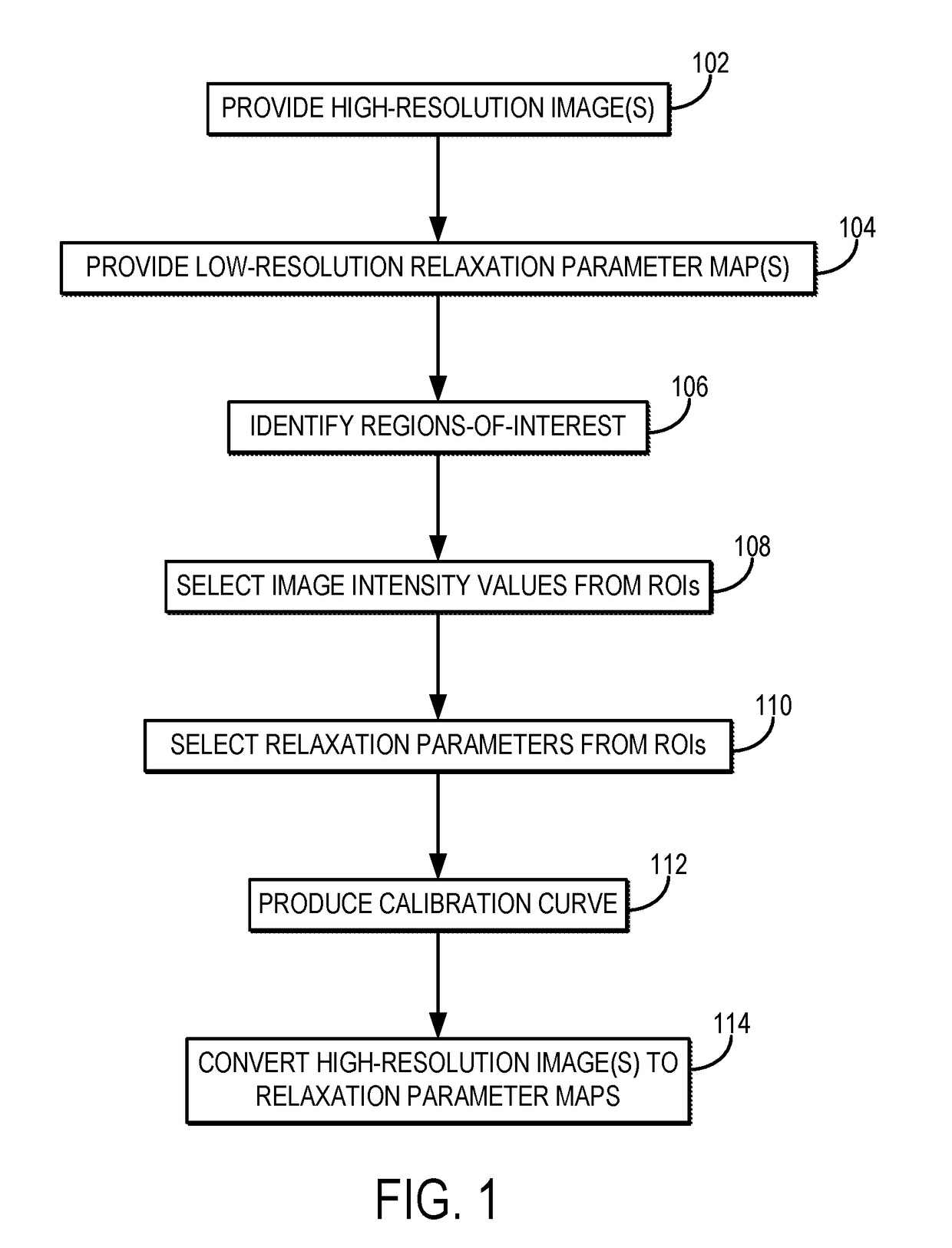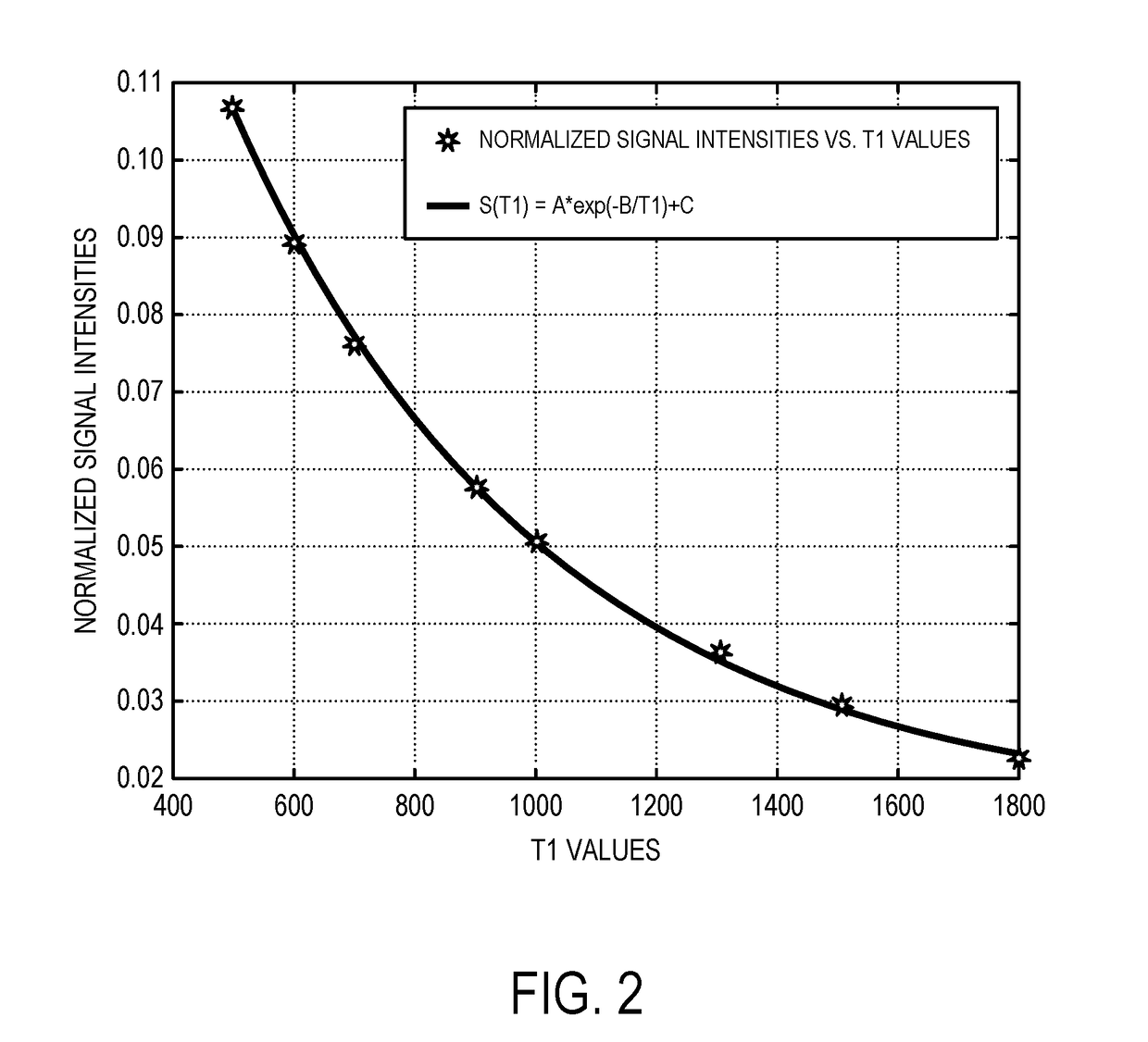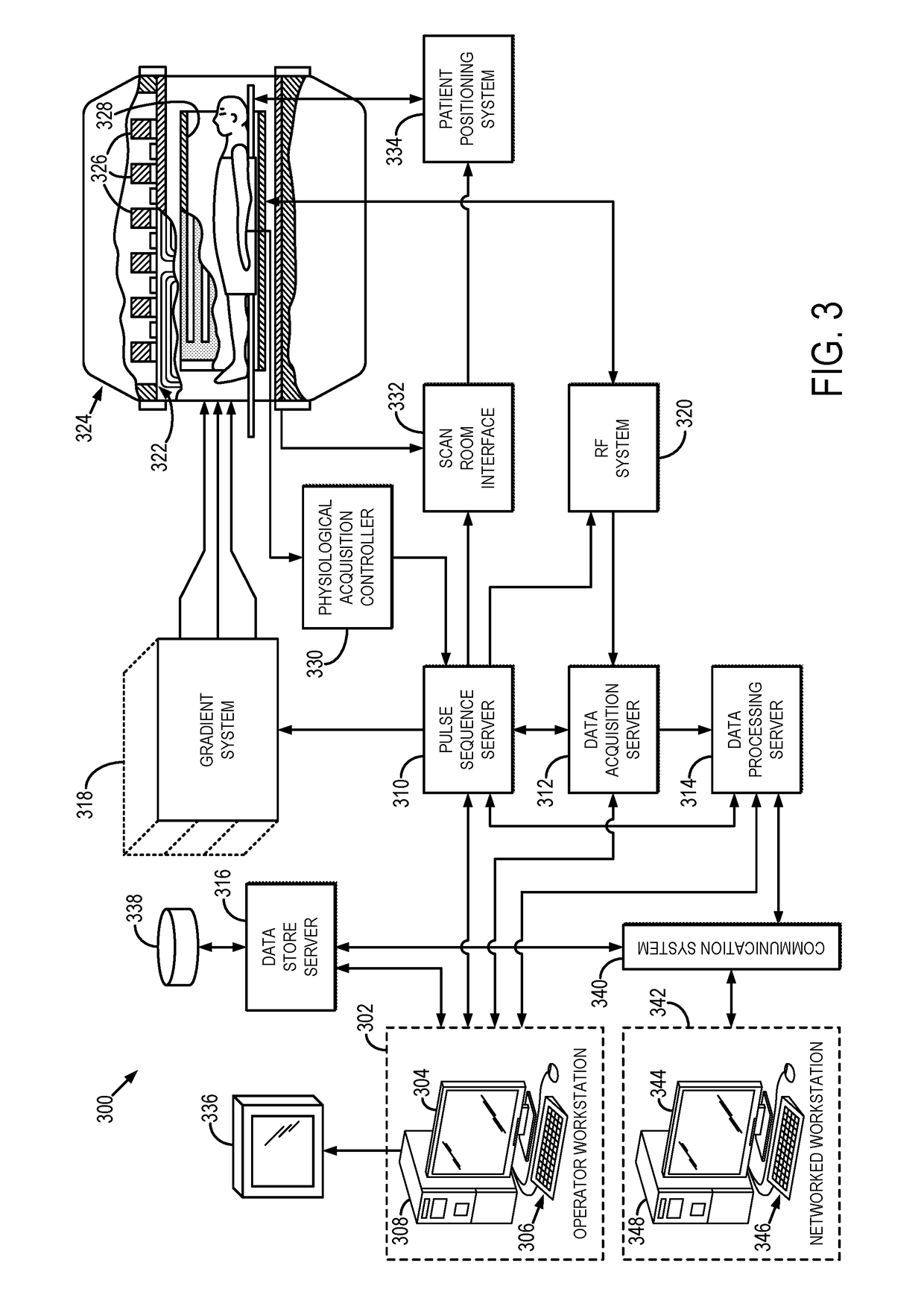System and Method for Producing High-Resolution Magnetic Relaxation Parameter Maps
a technology of relaxation parameter and magnetic resonance imaging, which is applied in the field of system and method for producing high-resolution relaxation parameter map, can solve the problems of time-consuming and laborious process, inability to accurately identify tissue types outside of dense scars, and inability to accurately identify tissue types. the effect of low spatial resolution
- Summary
- Abstract
- Description
- Claims
- Application Information
AI Technical Summary
Benefits of technology
Problems solved by technology
Method used
Image
Examples
Embodiment Construction
[0015]Described here are systems and methods for producing high-resolution three-dimensional (“3D”) relaxation parameter maps by calibrating high-resolution 3D magnetic resonance images. As one example, high-resolution longitudinal relaxation time (“T1”) maps can be generated based on images acquired using a T1-weighted pulse sequence, and as another example high-resolution transverse relaxation time (“T2”) maps can be generated based on images acquired using a T2-weighted pulse sequence. The high-resolution images can be calibrated, for example, using a lower resolution single slice relaxation parameter map. The methods described here utilize high-resolution 3D scans and low-resolution relaxation parameter maps that are commonly available on MRI systems. The calibration is a post-processing step used to create the high-resolution 3D relaxation parameter maps from these two types of scans.
[0016]The systems and methods described here include converting high-resolution 3D images to hi...
PUM
 Login to View More
Login to View More Abstract
Description
Claims
Application Information
 Login to View More
Login to View More - R&D
- Intellectual Property
- Life Sciences
- Materials
- Tech Scout
- Unparalleled Data Quality
- Higher Quality Content
- 60% Fewer Hallucinations
Browse by: Latest US Patents, China's latest patents, Technical Efficacy Thesaurus, Application Domain, Technology Topic, Popular Technical Reports.
© 2025 PatSnap. All rights reserved.Legal|Privacy policy|Modern Slavery Act Transparency Statement|Sitemap|About US| Contact US: help@patsnap.com



